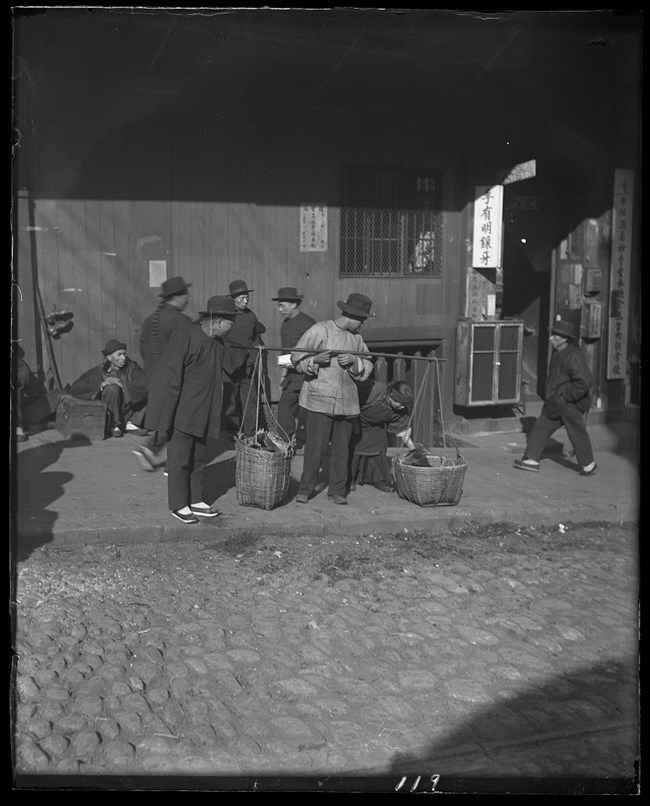Last updated: May 11, 2020
Article
California NHT: Chinese Immigration

Image/Genthe photograph collection, Library of Congress, Prints and Photographs Division.
In American history, gold rushes often go hand in hand with intolerance. The discovery of gold in Georgia in the late 1820s, for example, led to the dispossession of Cherokee lands and the tribe’s forced migration to Indian Territory along the Trail of Tears. The California Gold Rush, which began in 1848, highlighted similar tensions within a different cast of characters. The state itself was taken forcefully from Mexico in a war with its own racist histories; indeed, many southern slaveowners saw the newly acquired territory as a way to expand slavery westward.
For many Americans, overland migration along the California and Oregon trails offered the promise of a better life. Although they arrived by ship and not by wagon, many emigrants from around the world sought the same thing. Thousands of Chinese immigrants flooded into California, driven from their homeland by civil unrest and natural disasters and lured to new shores by the promise of Gum Saan or “Gold Mountain.” Most were married men that sent whatever money they made back to their wives in China; Mark Twain described them as “industrious as the day is long.”
Yet for as diverse as California is today, its white residents were hardly welcoming in the 1850s. The “Chinatowns” that immigrants formed made many white residents uneasy, and many accused the Chinese of “clannishness.” California law prohibited members of the Chinese community (and other people of color) from testifying in court. After passing a Foreign Miners’ Tax in 1850 that targeted Mexican miners, the California legislature passed a similar law in 1852 aimed at Chinese immigrants. By the time the law was voided in 1870, Chinese miners had paid more than $5 million dollars in taxes—a quarter of the state’s revenue during that period. To avoid the taxes levied on them, many left mining altogether and found work on railroads, in agricultural fields, or as cooks and laundrymen.
- Robert Hine and John Mack Faragher, The American West: A New Interpretive History (New Haven, Conn.: Yale University Press, 1993), 245-46.
- Yenyen Chan, “Interpreting the Contributions of Chinese Immigrants in Yosemite National Park’s History,” The George Wright Forum 34, no. 3 (2017): 301.
Listing element photo: Detroit Photographic Co. A street in Chinatown. California Chinatown Los Angeles United States, None. [Between 1898 and 1905] Photograph. https://www.loc.gov/item/2008678098/.
